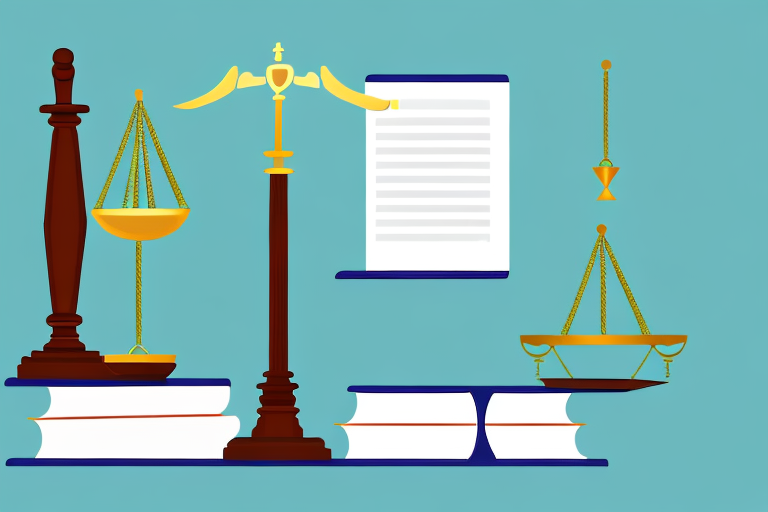Family law encompasses a wide range of legal matters that relate to familial relationships and domestic issues. This branch of law deals with the rights and responsibilities of individuals within a family unit and aims to provide resolutions to issues that may arise. Understanding the intricacies of family law is crucial for anyone involved in a family-related legal matter, whether it be divorce, child custody, adoption, or domestic violence. In this article, we will explore the various key issues in family law and the potential resolutions available.
Understanding Family Law: A Brief Introduction
To comprehend what is family law, it is important to first understand its fundamental role and significance in society. Family law serves as a framework to protect the interests and rights of individuals within a family unit while also promoting harmony and stability. It deals with legal matters such as marriage, divorce, child custody, and property division. The primary objective of family law is to find fair and equitable solutions to complex family disputes, prioritizing the wellbeing of all parties involved.
Family law encompasses a wide range of legal issues that arise within the context of familial relationships. It addresses not only the dissolution of marriages but also the establishment of legal relationships through adoption and the determination of parental rights and responsibilities. By providing a legal structure for resolving familial issues, family law plays a crucial role in maintaining social order and promoting the welfare of individuals and families.
The Role and Importance of Family Law
Family law plays a crucial role in society by providing a legal structure for resolving familial issues and maintaining social order. It ensures that disputes affecting families are resolved in a fair and just manner, taking into account the best interests of all parties involved. Additionally, family law promotes stability within families and helps protect the rights and welfare of vulnerable individuals, such as children and victims of domestic violence. Without family law, navigating the complexities of family-related legal matters would become even more challenging and may lead to unfair outcomes.

Family law not only addresses the legal aspects of family relationships but also recognizes the emotional and psychological dynamics that often accompany these issues. It recognizes that the breakdown of a marriage or the separation of parents can have a profound impact on the individuals involved, especially children. Therefore, family law seeks to provide support and guidance to help families navigate these challenging times and reach resolutions that are in the best interests of all parties.
Key Terms and Concepts in Family Law
Before delving into specific issues and resolutions in family law, it is essential to familiarize oneself with key terms and concepts commonly encountered in this field.
- Marital property: Refers to assets and debts acquired by spouses during their marriage. It may include houses, cars, bank accounts, and even retirement savings. The division of marital property is an important aspect of divorce proceedings and aims to ensure a fair distribution of assets.
- Child custody: Determines the legal and physical care of children after the separation or divorce of their parents. It can be joint custody, sole custody, or shared custody, depending on the circumstances. Child custody arrangements aim to prioritize the best interests of the child and promote a healthy and stable environment.
- Alimony: Also known as spousal support, alimony refers to financial payments made from one spouse to another after a divorce or separation. Its purpose is to ensure economic fairness and support the dependent spouse. Alimony arrangements take into account factors such as the length of the marriage, the earning capacity of each spouse, and the standard of living established during the marriage.
- Adoption: The legal process of permanently transferring parental rights and responsibilities from the biological parents to adoptive parents. It provides a stable home for children who are unable to live with their birth parents for various reasons. Adoption proceedings involve extensive legal requirements and aim to ensure the best interests of the child are met.
Understanding these terms and concepts will enable individuals involved in family law matters to navigate the legal process more effectively and make informed decisions. It is important to consult with a knowledgeable family law attorney who can provide guidance and advocate for your rights and interests throughout the legal proceedings.
Common Issues in Family Law
Within the realm of family law, several issues commonly arise, often leading individuals to seek legal guidance and intervention. Let us examine some of these key issues and the potential resolutions they entail.
Divorce and Separation
Divorce, or the legal termination of a marriage, is a significant issue in family law. The process involves dividing assets, determining child custody and visitation, and addressing financial matters such as alimony and child support. Resolutions in divorce cases can be achieved through negotiation, mediation, or litigation, depending on the complexity of the situation and the willingness of the parties to cooperate.
When it comes to dividing assets, the court considers factors such as the length of the marriage, the contributions of each spouse to the marriage, and the financial needs and circumstances of each party. This can include the division of real estate, investments, retirement accounts, and personal property.
Child custody and visitation arrangements are crucial aspects of divorce cases, as the well-being and best interests of the child are prioritized. Courts may consider factors such as the child’s age, current living arrangement, educational needs, and the ability of each parent to provide a stable environment. Mediation and negotiation are commonly used in custody disputes to reach mutually agreeable solutions.
Financial matters, including alimony and child support, are carefully evaluated to ensure fairness and the financial stability of both parties involved. Alimony, also known as spousal support, is often awarded to one spouse to provide financial assistance during and after the divorce process. Child support, on the other hand, is calculated based on the income and financial circumstances of each parent, ensuring that the child’s needs are met.

Child Custody and Visitation Rights
Child custody disputes often arise during divorce or separation, where both parents are seeking custody or visitation rights. Resolutions in such cases primarily focus on determining the best interests of the child. Courts may consider factors such as the child’s age, current living arrangement, educational needs, and the ability of each parent to provide a stable environment. Mediation and negotiation are commonly used in custody disputes to reach mutually agreeable solutions.
In cases where joint custody is not feasible or in the best interests of the child, sole custody may be awarded to one parent. This means that one parent has the legal and physical custody of the child, while the other parent may be granted visitation rights. The court may also establish a visitation schedule to ensure that the child has regular contact with both parents.
When determining custody and visitation rights, the court may also consider the child’s preferences, especially if they are of a certain age where their opinion can be taken into account. The court’s primary concern is always the well-being and safety of the child.
Alimony and Child Support
Alimony and child support are financial obligations that one party may have to fulfill for the benefit of the other spouse or child. These obligations are typically determined based on the income and financial circumstances of each party. Resolutions may involve negotiating a fair amount outside of court or seeking a court order for payment.
Alimony, also known as spousal support, is often awarded to one spouse to provide financial assistance during and after the divorce process. The amount and duration of alimony payments are determined based on factors such as the length of the marriage, the financial needs and circumstances of each party, and the contributions made by each spouse to the marriage.
Child support, on the other hand, is calculated based on the income and financial circumstances of each parent, ensuring that the child’s needs are met. The court considers factors such as the child’s living expenses, educational needs, and medical expenses when determining the appropriate amount of child support.
Adoption and Surrogacy
Adoption and surrogacy involve complex legal processes aimed at establishing legal parental rights for individuals or couples who wish to expand their families. Resolutions in these cases require complying with applicable adoption laws, fulfilling specific requirements, and ensuring the best interests of the child are met.
In adoption cases, prospective parents must go through a rigorous screening process to ensure their suitability to provide a loving and stable home for the child. This process typically involves background checks, home visits, and interviews with social workers. Once the adoption is finalized, the adoptive parents assume all legal rights and responsibilities for the child.
Surrogacy, on the other hand, involves a woman carrying a pregnancy on behalf of another individual or couple. The legal process surrounding surrogacy varies by jurisdiction, and it is essential to navigate the legal framework to ensure the rights and responsibilities of all parties involved are protected.
Domestic Violence and Child Abuse
Domestic violence and child abuse are grave issues that family law addresses with utmost urgency. Resolutions involve protecting the victims from harm, obtaining restraining orders, and providing necessary resources for recovering and rebuilding their lives. Legal interventions may include filing for divorce or seeking custody changes to ensure the safety of the affected individuals.
In cases of domestic violence, the court may issue restraining orders or protective orders to ensure the safety of the victim and any children involved. These legal measures prohibit the abuser from contacting or approaching the victim and may also grant temporary custody of the children to the victim.
Child abuse cases require immediate action to protect the child from further harm. The court may remove the child from the abusive environment and place them in the care of a trusted family member, foster care, or a child protective agency. Legal interventions aim to ensure the child’s safety and well-being while providing resources and support for their recovery.

Resolving Family Law Disputes
When faced with family law disputes, various methods can be employed to seek resolutions. Let us explore some commonly utilized approaches:
Mediation and Negotiation
Mediation and negotiation are alternative dispute resolution methods that encourage effective communication and cooperation between parties. In these processes, a neutral third party assists in facilitating discussions and finding mutually acceptable solutions. Mediation and negotiation can minimize the need for lengthy court battles and empower the parties involved to make decisions that best suit their needs.
Collaborative Family Law
Collaborative family law involves the participation of specially trained attorneys who work cooperatively to find resolution without going to court. This approach allows the parties to maintain control over the decision-making process while benefiting from the guidance and expertise of their lawyers.
Litigation and Court Proceedings
In some cases, litigation and court proceedings become necessary to protect one’s rights or reach a resolution. When all other options have been exhausted or unsuccessful, pursuing legal avenues through litigation allows for a final judgment from a judge. Although litigation can be more adversarial, it can be the most appropriate method for resolving complex family law disputes.
The Role of a Family Lawyer
Family lawyers play a pivotal role in assisting individuals with their family law matters. They provide invaluable legal advice, guidance, and representation throughout the legal process. Let us examine some key aspects of their role:
Legal Advice and Representation
Family lawyers provide clients with accurate legal advice tailored to their specific circumstances and legal objectives. They have in-depth knowledge of family law and can assess the merits of a case, outline potential outcomes, and devise strategies to achieve the best possible resolution.
Protecting Clients’ Rights and Interests
A family lawyer’s primary responsibility is to protect their client’s rights and interests. They advocate for their client’s position during negotiations, mediations, and court proceedings, ensuring that their voice is heard and that their rights are upheld. Family lawyers strive to achieve resolutions that are fair, just, and in the best interests of their clients.
In conclusion, family law addresses a broad range of key issues and offers various resolutions to ensure fair and equitable outcomes. By understanding the role of family law, familiarizing oneself with its key terms and concepts, and seeking professional guidance, individuals navigating family law matters can better navigate the complex legal landscape, protect their rights, and achieve resolutions that prioritize the best interests of all parties involved.
More to read
A Deep Dive into Property Law: Understanding Rights and Obligations

